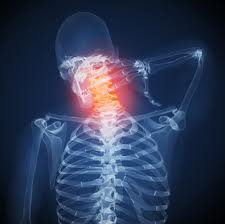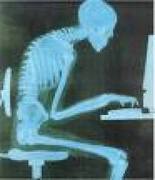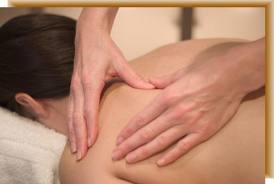Mechanical Neck Pain
- Home
- Head & Neck
- Common Ailments
- Mechanical Neck Pain
Neck pain is common, with over two thirds of the population experiencing neck pain at some time in their lives. One survey done in the UK found that of adults aged between 45-75, 1 in 4 women and about 1 in 5 men currently had neck pain.

The neck (cervical spine) is composed of 7 vertebrae which begin at the base of the skull and end at the upper torso.
The purpose of the cervical spine is to contain and protect the spinal cord, support the skull and enable diverse head movement.
The cervical spine has a complex ligament and muscle structure surrounding it that allows for the functions as described above. However, as it is less protected than the rest of the spine, the neck can be vulnerable to injury and disorders that produce pain and restrict motion. For many people, neck pain is a temporary condition that disappears with time.
Many things can trigger neck pain. As stated above, neck pain is a common complaint and rarely is it anything serious.
- Stress or tension are the most common reasons for neck pain
- Poor posture or ergonomics
- Prolonged awkward positions e.g. falling asleep in an awkward position
- Injury or trauma e.g. whiplash
- Degenerative or ‘age related’ changes to the vertebrae and discs – this is often referred to as cervical spondylosis
- Cervical Radiculopathy is where the root of a nerve is pressed on or injured as it comes out of the cervical region. The symptoms of this are very specific (see below). This cause is often referred to as a slipped disc although the term is actually incorrect.
- More serious and rarer causes include: rheumatoid arthritis, bone disorders, cancers, and serious injuries that damage the vertebrae, spinal cord or nerves in the neck. These have been included for completeness.

Signs and symptoms of neck pain may include:
- Dull ache or sharp pain in the base of your skull or neck
- Stiffness in your neck
- Pain at the top of your shoulders or around the shoulder joint
- Upper back pain
- Difficulty carrying out your daily tasks due to the pain and/or stiffness
- Pins and needles, numbness or weakness in one or both arms (associated with cervical radiculopathy) – this is very atypical, however should you have these symptoms you must contact a medical professional
- Additional rare symptoms that require immediate medical attention include:
- Dizziness
- Double vision
- Problems with speech or swallowing
- Problems with coordination of the arm and hands
Most people experience symptoms that are local to the neck and shoulder region. They describe their symptoms as a dull ache or occasional sharp pain. The advice below should help ease your symptoms. If you are struggling then physiotherapy can be an extremely beneficial.
- Posture and Ergonomics – these 2 factors needs addressing in almost every case of neck pain. Physiotherapy can help you to become more posture aware and advise you on correct ergonomics.
- Exercises – it is important to keep you neck moving, even though it may be painful to begin with.
- Pain Control – as stated above it is important to keep your neck moving, therefore your pain needs to be controlled. See your GP for correct education about the right kind of pain relief for you.
- Heat – people often find heat beneficial to allow them to do their exercises so as to prevent them from stiffening up.
- Soft tissue mobilisation and manual therapy – people find these physiotherapy techniques useful to help them manage their neck pain.
- WAD guidelines – the CSP has produced guidelines on the most appropriate forms of treatment for people who have sustained whiplash injuries – PLEASE SEE OUR WHIPLASH SECTION

